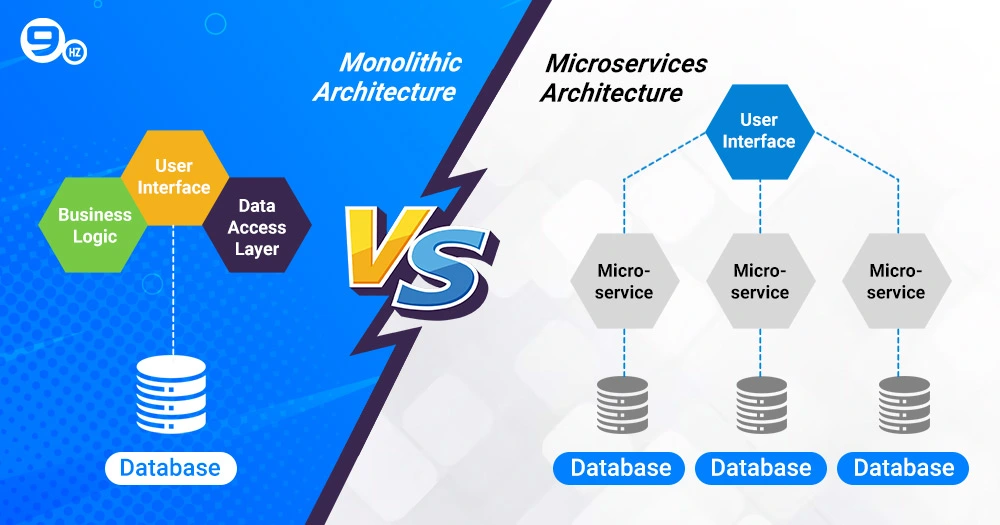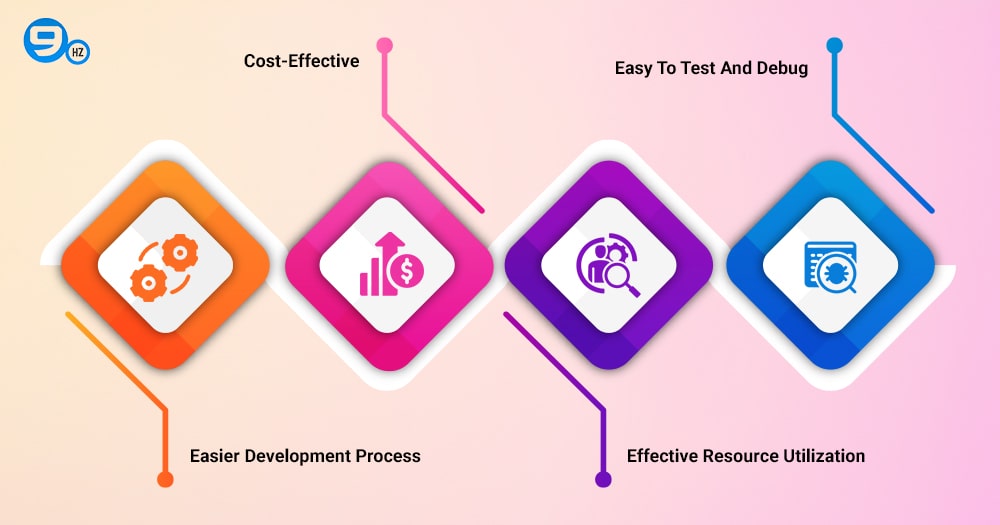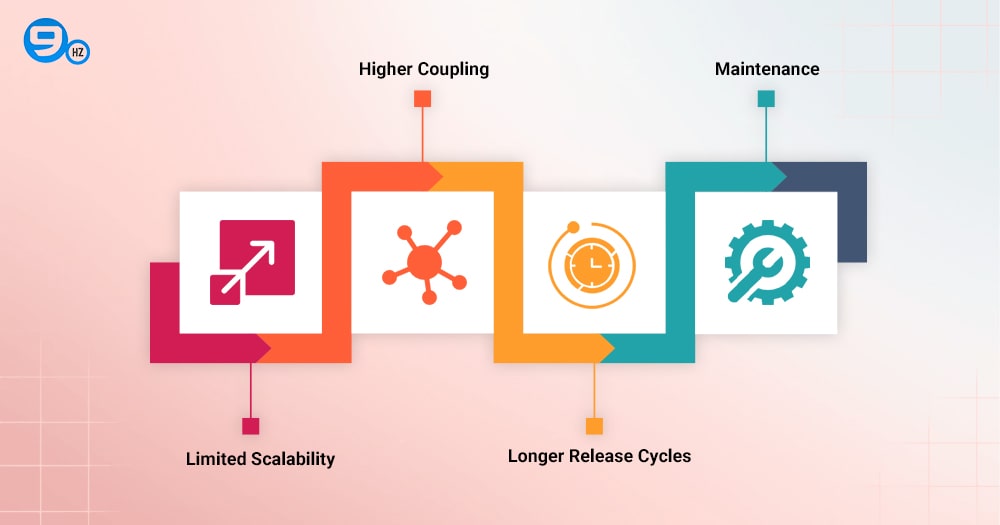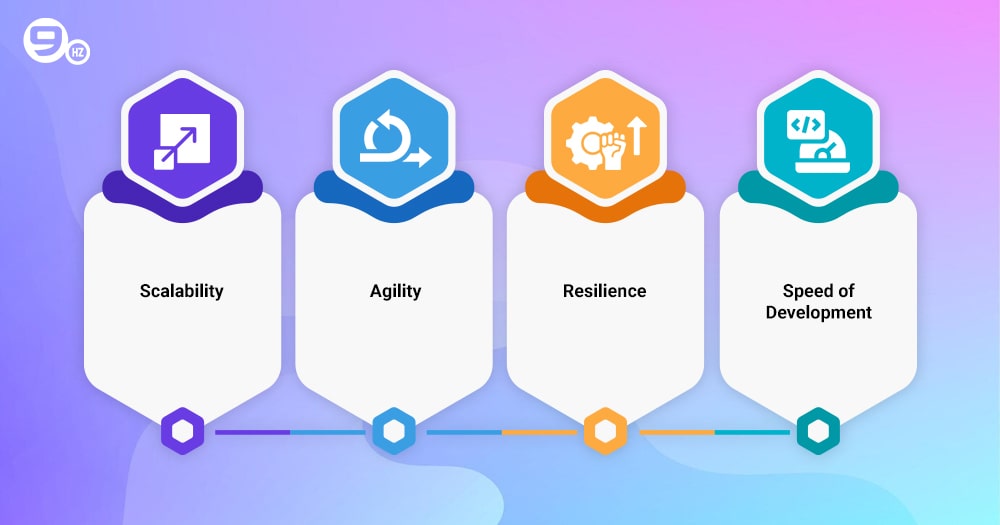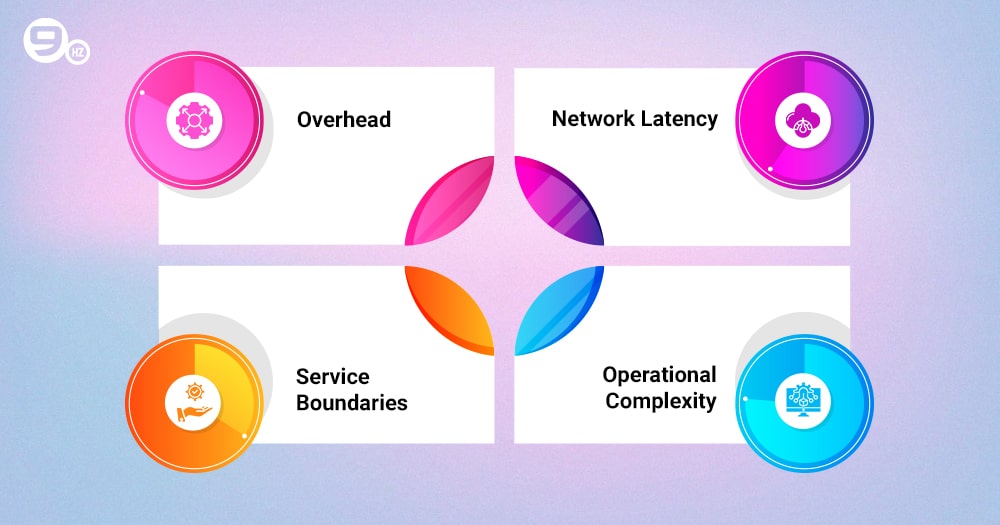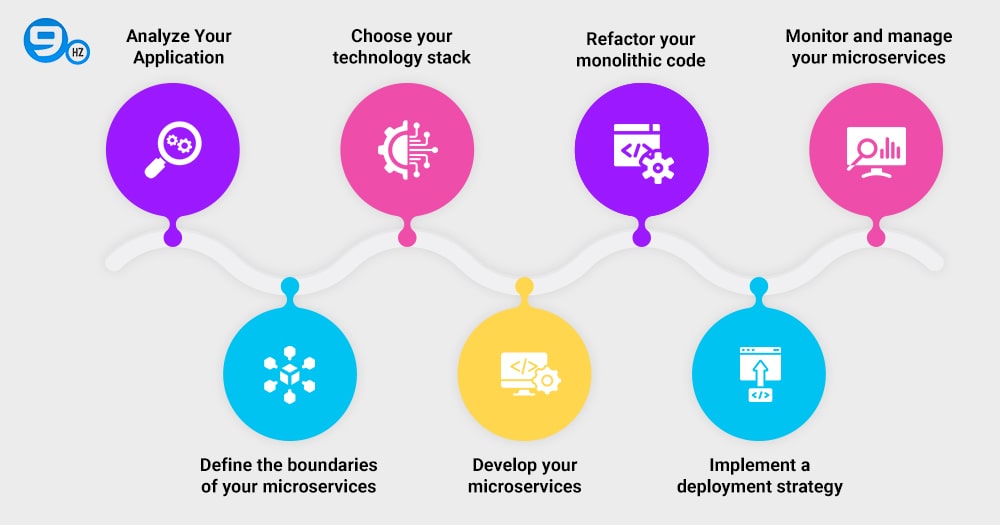The cut-throat arena of software development demands you to choose wisely between software architecture, as it could either make or break your business. The battle between microservices and monolith architectures is a fierce one, with both having their own unique pros and cons. In this post, we will delve into the depths of monolithic vs microservices architecture, and scrutinize the crucial factors that must be taken into account with utmost care to determine which approach fits your business needs like a glove.
Introduction
Recent years have seen an explosion in the popularity of microservices architecture, with more and more organizations jumping on the bandwagon. In fact, according to a survey by Sumo Logic, a whopping 77% of global organizations are either already using microservices or seriously considering adopting it. This represents a massive surge in adoption when compared to past years, signaling a major shift in the software development landscape.
What is Monolithic Architecture?
In a monolithic architecture, all aspects of an application, such as front-end code, business logic, database, server code, and other components, are fused together into a single entity. These components interact with each other through a solitary entry point, often an API. Consequently, developers must manage the whole application as a whole, rather than as individual components.
While monolithic application is often an excellent starting point for most projects because it is relatively easy to develop and deploy, it can quickly become problematic for larger projects where components need to be frequently updated or changed. Making changes to the entire system can be incredibly complex and result in long deployment times, which can hamper the development process. Additionally, any changes made to the application must be rigorously tested since even the smallest mistake can impact the complete system.
What is Microservices Architecture?
Microservice architecture is a modern approach to application development that structures an application as a collection of services, each responsible for handling specific business capabilities. These services work together to create an application, and the architecture is designed to be resilient and scalable.
The beauty of microservice architecture lies not in its complexity, but in its striking flexibility. It paves the way for services that can be altered independently of one another, facilitating rapid development and deployment. Each service operates in its own unique sphere, built, deployed, and managed autonomously, granting teams the power to quickly develop, deploy, and scale new features and bug fixes with ease and precision.
Each service can be created using a unique set of technologies or languages, providing developers with a wealth of flexibility and the freedom to cherry-pick the best technology stack for each individual service.
Difference Between Monolithic vs Microservices Architecture
The difference between Monolithic and Microservices architectures lies in their design and approach to building applications:
| Monolithic architecture involves building the whole application as a single unit | Microservice architecture breaks down the application into smaller, independent services that can be deployed separately. |
| Monolithic application is better suited for applications with limited functionality and/or complex data models, such as ERP or customer relationship management systems. | Microservices architectures are ideal for applications that require flexibility and scalability, like e-commerce platforms or streaming video services. |
| Deploying a monolith involves packaging and deploying the application as a single unit, which makes it easier to deploy. | Microservices, on the other hand, can be deployed independently, allowing for faster deployment and easier maintenance. |
| Monoliths have fewer dependencies, making them easier to manage, | Microservice offer greater flexibility and scalability but require more monitoring and maintenance due to their distributed nature. |
| Monoliths tend to have shorter development cycles and are easier to maintain and debug, | Microservices offer more flexibility and scalability but require more monitoring and maintenance due to their distributed nature. |
Advantages of a Monolithic Architecture
1. Easier Development Process
Monolithic architecture is highly advantageous, renowned for its ease of development. It’s widely accepted that housing all application components in the same codebase allows developers to work more efficiently and quickly, ensuring consistency and simplifying the testing and debugging process. This intrinsic benefit permits developers to optimize their productivity and reduce their workload significantly, resulting in increased efficiency and output quality.
2. Cost-effective
Another advantageous feature of the monolithic architecture is its cost-effectiveness, making it an ideal solution for small and medium-sized businesses. Due to the application’s design, operating within the same environment, the cost of deployment and maintenance is significantly lower than that of microservices development. Additionally, the development time for a monolith is typically shorter than that of a microservice, allowing businesses to achieve quicker returns on their investments.
3. Effective Resource Utilization
The architecture enables effective resource utilization, a vital aspect of software development. Developers can use fewer tools and technologies to develop an application, allowing them to gain a better understanding of how it works. This knowledge simplifies further development and maintenance, which permits developers to focus on creating robust software that meets user needs and requirements. Consequently, software development companies in USA avoid the wastefulness of managing complex tools that detract from their main tasks.
4. Easy To Test And Debug
Monolithic applications are easy to test and debug, which is of the utmost importance in software development. Testing and debugging the complete application at once, rather than debugging individual components, can save valuable time and resources. This feature ensures that any issues are identified and resolved before they turn into significant problems, providing a more reliable and stable software product.
Disadvantages of a Monolithic Architecture
1. Limited Scalability
Monolithic architecture may not be suitable for large-scale applications as it becomes harder to scale individual components of the application as they grow in size and complexity. Scaling the entire application can become difficult, and the performance may suffer.
2. Higher Coupling
Since all components of an application are tightly integrated, any changes made to one component can have a ripple effect across the complete system. This makes it difficult to maintain and update the system, especially when dealing with legacy code.
3. Longer Release Cycles
In monolithic applications, all components are tested, built, and deployed together, which can lead to longer release cycles. This can make it difficult to implement new features or updates quickly, especially in a fast-paced business environment.
4. Maintenance
Maintenance of monolithic applications can be challenging. Since all components are tightly coupled, debugging and troubleshooting can be complex and time-consuming. Additionally, updating the application can be difficult as any changes require redeployment of the entire application.
Advantages of Microservices
1. Scalability
Microservices architecture allows for scaling individual components of an application independently of one another, which is not possible with a monolithic architecture. This means that you can scale only the components that need more resources, leading to better performance.
2. Agility
Microservices allow for faster and more frequent deployment of new features or changes to an application. Since each service can be developed and deployed independently, there is no need to wait for the entire application to be ready for deployment.
3. Resilience
Microservices are designed to be resilient, meaning that if one service fails, it does not bring down the entire application. Instead, only the affected service is impacted, while the rest of the services continue to function normally.
4. Speed of Development
Microservices architecture allows for faster development cycles, as each service can be developed independently by different teams. This reduces the time required for testing and deployment, allowing for faster time-to-market.
Disadvantages of Microservices
1. Overhead
The use of microservices can result in additional overhead due to the need for communication between services, and the deployment and maintenance of multiple services.
2. Network Latency
In a microservices application, services communicate with each other over a network. This can introduce latency, which can affect the performance of the system.
3. Operational Complexity
With microservices, there is increased operational complexity due to the need to manage multiple services running on different servers or containers. This can make tasks such as deployment, monitoring, and scaling more complex.
4. Service Boundaries
The division of services in microservices architectures can lead to the creation of too many or too few services, which can impact the overall efficiency and performance of the system.
How to Migrate from Monoliths to Microservices?
Migrating from monolithic architecture to microservices is not a trivial task and requires careful planning and execution. Here are some steps to follow when considering a migration:
1. Analyze your Application
Start by analyzing your current monolithic application to identify its components and dependencies. Determine which parts of the application would be better suited to microservices.
2. Define the Boundaries of your Microservices
Once you have identified the parts of the application that will be split into microservices, define their boundaries. Each microservice should have a clear purpose and a well-defined interface.
3. Choose your Technology Stack
Decide on the technology stack you will use for your microservices. Consider factors such as scalability, resilience, and ease of deployment.
4. Develop your Microservices
Develop your microservices incrementally, one by one. Test each microservice thoroughly before moving on to the next one.
5. Refactor your Monolithic Code
As you develop your microservices, refactor your monolithic code to remove any dependencies on the microservices you are creating.
6. Implement a Deployment Strategy
Implement a deployment strategy that allows you to deploy new microservices while minimizing downtime. Consider using containerization tools like Docker to streamline deployment.
7. Monitor and Manage your Microservices
Set up monitoring and management tools to keep track of your microservices’ performance and quickly identify and resolve any issues.
By following these steps and carefully planning and executing the migration, you can reap the benefits of a more scalable, maintainable, and resilient architecture.
Why Should you Partner with The NineHertz to Reap Business Benefits from Microservices?
Choosing the right architecture for your business is a challenging and essential task to ensure long-term success. The decision between microservices and monolith architectures can be perplexing, requiring careful consideration of your business’s unique requirements. However, partnering with The NineHertz can help you take full advantage of the burstiness of microservices, such as scalability, improved uptime, and increased development speed.
Our team of experienced professionals has a deep understanding of microservices and can provide you with the guidance and support you need to make an informed decision. We work closely with you to develop a customized solution that meets your specific needs and delivers tangible results.
At The NineHertz, we pride ourselves on our collaborative approach, working hand in hand with our clients to create tailored solutions that maximize success.
Contact us today to learn more about how we can help you harness the benefits of microservices application and achieve your long-term business objectives.
Conclusion: Monolithic vs Microservices Architecture
The loop of comparison between monolithic architecture and microservices architecture is never ending as both of them got their own pros and cons. However, the latest application development are based on microservices architectures as it provide more flexibility to developer and makes it easier to identify the bug and remove it without affecting rest of the components.
FAQ’s: Microservices Architecture vs Monolithic
Q.1 What is the Difference Between Monolith and Microservices?
In a monolithic architecture, all components of the application are interconnected and deployed together. On the other hand, microservices architecture involves breaking the application down into smaller, independent services that can be developed, deployed, and scaled independently.
Q.2 Which is Better Monolith or Microservices?
Monolithic architectures can be a good choice for smaller projects where simplicity is key. Microservices architecture, on the other hand, can provide greater scalability, flexibility, and fault tolerance, but it requires more planning and can be more complex to develop and maintain. It is more suitable for larger and more complex projects where scalability and flexibility are crucial.
Q.3 Why Move from Monolith to Microservices?
Organizations may opt to switch from a monolithic architecture to a microservices architecture for various reasons. One significant advantage of microservices architecture is its flexibility, allowing for more agile and adaptable development processes. Another advantage is improved fault isolation and resiliency. With microservices, services are isolated, and a failure in one component will not affect the entire application, increasing its resilience.
Great Together!
